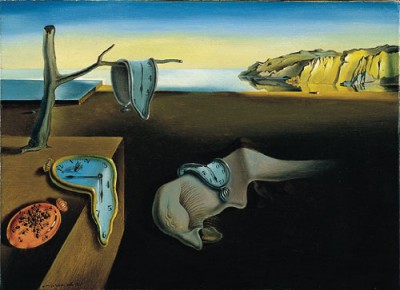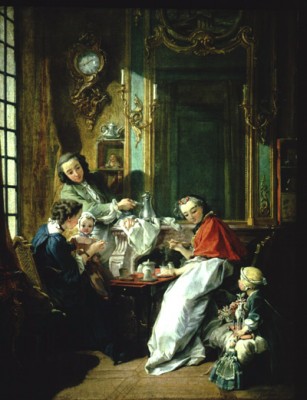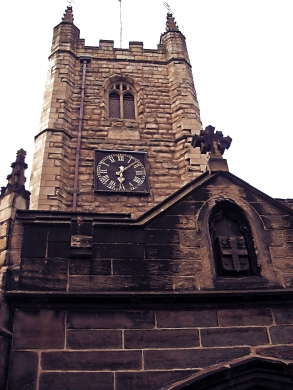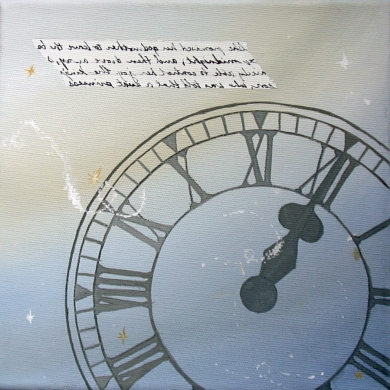Artists have long been attracted to the concept of time. In fact, the very creation of artwork can be seen as an attempt to capture a moment in time, and in some ways, make it last forever. But as much as we try to capture time, it is something that refuses to be held or defined. Salvador Dali’s “Persistence of Memory”, and its ironic use of the melted clock motif, famously expresses this fluidity of time and reality.
Traditionally, the clock has been a symbol of the comfort and stability of domestic regularity and routine. Francois Boucher’s “Le Dejeuner” is a perfect example of depicting a happy household in which the clock seems a benevolent force, overseeing and protecting the scene below.
Even now, the image of a clock tower brings to mind a sense of continuity and community, a reminder of a time when people’s schedules were punctuated by church bells and clock chimes as calls to worship or announcements of important news.
But in today’s society, in our constant state of information overload, it seems like the clock is a source of anxiety. It reminds us that time is slipping away from us, like a candle burning down. Often, there is no balance between the natural rhythms of our days and the expectations we impose on ourselves. This lack of balance can take a heavy toll (no pun intended).
As the year draws to a close, thoughts focus on events of the previous months but also of the months to come. The holiday season is the perfect time to slow down, stop watching the clock, and take a moment to relax and reflect on those things in life which stand the test of time.
Brian Sylvester is a guest blogger on WallSpin, and an artist on Zatista.
Related articles
- Intimate Interiors (zatista.com)
- The Art of Observation (zatista.com)
- Masters of Gouache (zatista.com)








Comments (0)